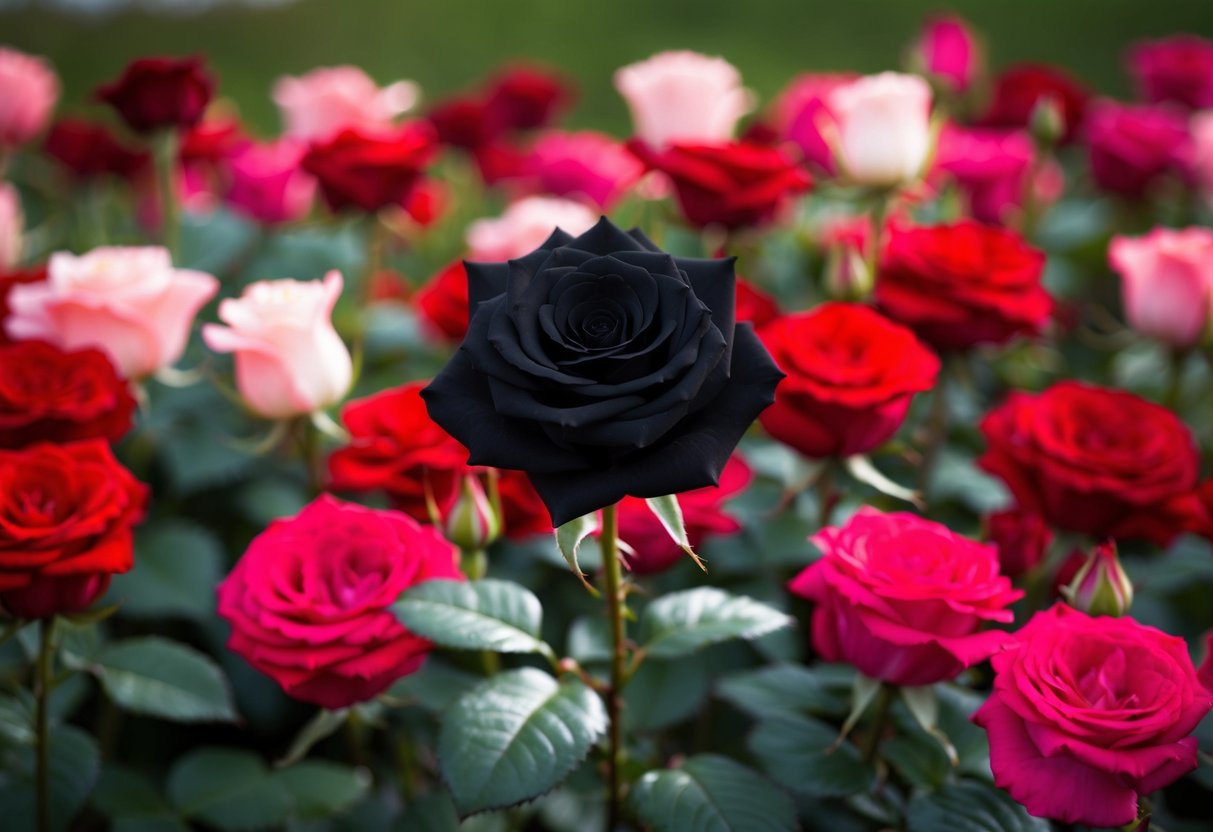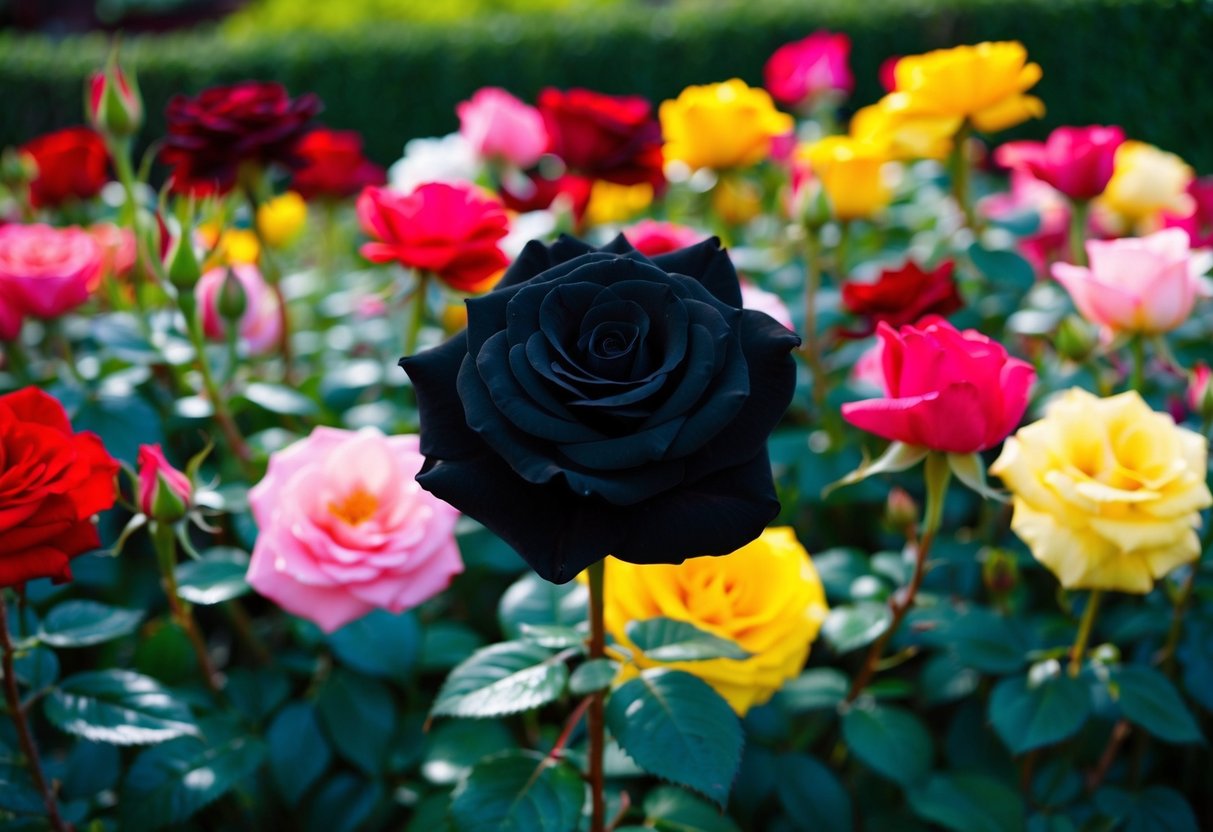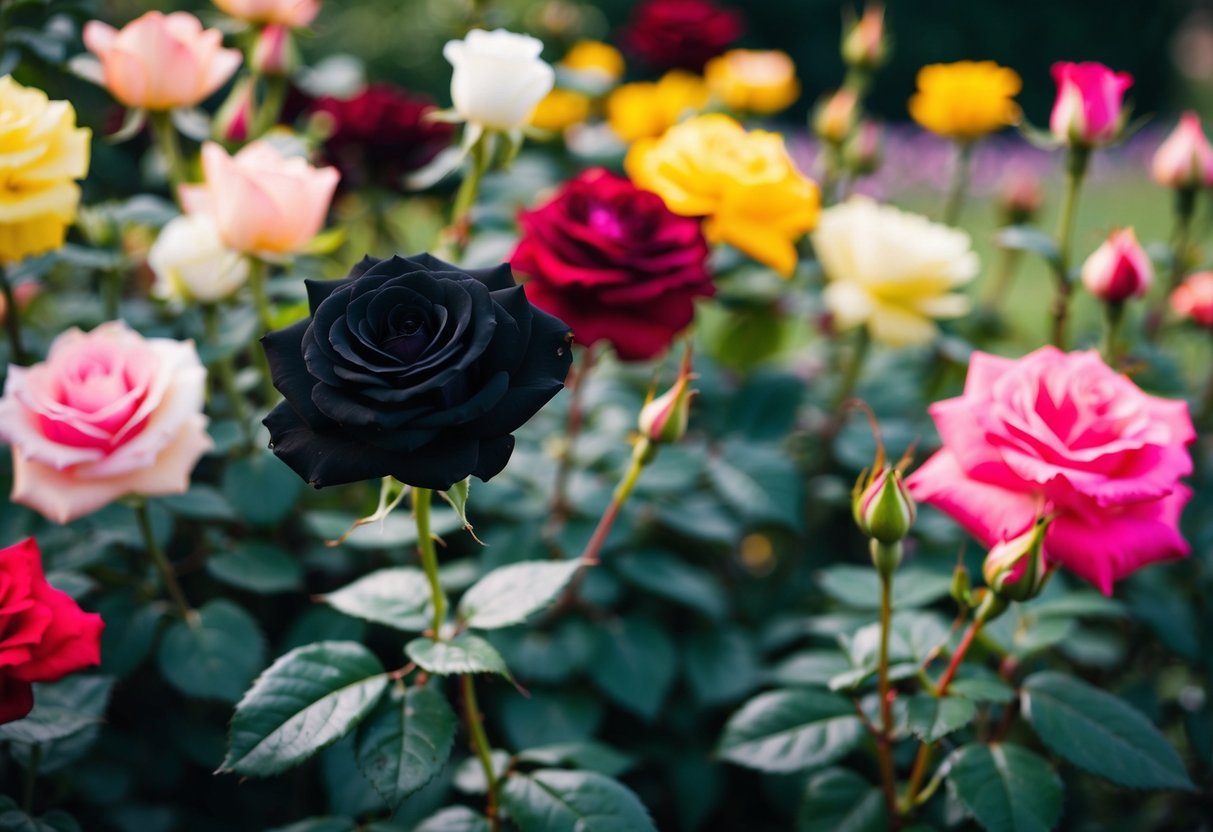What is the Rarest Color of a Rose? Exploring Unique Blooms
When you think of roses, the classic red blooms likely come to mind, filling gardens and bouquets with their timeless beauty. Yet, roses come in a dazzling array of colors, some so rare they seem nearly impossible. The rarest color of a rose is true blue, which does not occur naturally. While some gardeners have found ways to create blue hues through genetic modifications or dyes, a naturally blue rose remains as elusive as ever. In 2004, researchers in Japan made breakthroughs in creating a genetically modified blue rose, sparking excitement among florists and rose enthusiasts alike.

Beyond blue, you can find other rare rose colors like lemon yellow, peach, and even green. Some are achieved through careful breeding, while others result from clever dye techniques. Green roses, for instance, can be produced by injecting dye into the stems or by exposing white roses to green watercolor dye. This method allows the petals to absorb and show a tint, adding an uncommon touch to a traditional plant. The simple joy of discovering these unique hues adds an element of surprise to any garden or floral arrangement.
Exploring rare rose colors will take you on a journey, offering a glimpse into the creative and scientific efforts that go into creating these beautiful blooms. Whether you’re an avid gardener or just someone who loves florals, there’s something magical about these rare and vibrant colors that captivates the imagination. Each hue tells its own story, inviting you to wonder about what other botanical treasures might be possible.
The Allure of Blue Roses

Blue roses have captured the imagination of gardeners and flower enthusiasts for centuries. They symbolize mystery and enchantment, as true blue roses don’t exist naturally. Efforts to create these flowers have led to intriguing results and advancements.
History of Blue Roses
In the past, blue roses only existed in stories and art. People longed for roses with a true blue color, but nature didn’t provide them. Roses naturally come in shades of red, pink, white, or yellow, but blue remained elusive. These roses became symbols of beauty, the unattainable, and the mysterious in various cultures.
In modern times, blue roses gained symbolic value in movies and literature. While some have tried to achieve a blue hue through dyeing techniques, it never quite fulfilled the desire for a naturally blue rose. This led to scientific efforts to create the real thing.
Genetic Modification Efforts
Today, one of the most successful attempts to create blue roses comes from genetic modification. Scientists at Suntory, a Japanese company, developed the Suntory Blue Rose “Applause”. By inserting genes from other plants, they managed to produce a rose with bluish-violet petals, though not a true blue.
This Suntory Blue Rose represents a breakthrough in floral genetics. While it isn’t the pure blue that people imagine, it’s the closest we’ve come so far. This success inspires further research and innovation in plant genetics, with hopes of achieving a true blue rose one day.
Spectrum of Rose Colors

Roses come in many beautiful colors, each with its own unique traits and meanings. From classic red roses to rare green ones, these colors are shaped by specific pigments and hybridization processes.
Pigments and Hybridization
Roses are colorful thanks to pigments called anthocyanins and carotenoids. Anthocyanins give roses their red, pink, or purple hues, while carotenoids offer shades like yellow and orange. When these pigments mix, multicolor roses emerge.
Hybridization is key in creating new rose colors. By crossing different varieties, growers develop unique shades. Green roses are rare, often created through dyeing techniques or specific breeding methods. Surprisingly, there is no natural gene for true blue roses, making blue roses some of the rarest and most sought-after blooms. Understanding how pigments and hybridization work helps you choose the perfect rose color for any occasion.
Meaning and Symbolism
The colors of roses carry rich meanings. Red roses symbolize love and deep affection. They are often used in romantic gestures. White roses stand for purity and innocence. Yellow roses express friendship and joy, while pink roses signify admiration and gratitude.
Orange roses represent enthusiasm and passion. A truly rare color, green roses signify renewal and growth. Black roses, which are a deep red or purple, are often associated with mystery and farewell. Multicolor roses can convey complex sentiments by combining different symbols. Choosing the right rose color allows you to express feelings like trust, commitment, and appreciation in a meaningful way.
Cultivation of Rare Roses

Cultivating rare roses involves the careful work of horticulturists and the use of selective breeding techniques. Understanding the genetics behind rose colors is key to developing new and unique varieties.
Horticulturists’ Role
Horticulturists play a vital role in the cultivation of rare rose colors. Their work involves not just planting and nurturing roses but also studying their genetic makeup. They experiment with different cultivation methods to encourage the growth of rare varieties such as the elusive green rose.
By studying the plant’s needs, they ensure that the rare roses receive the right conditions for growth. This includes the proper soil composition, sunlight, and watering schedules. Horticulturists also focus on controlling pests and diseases to protect these delicate blooms from harm.
Through careful monitoring, they track the development of roses and make necessary adjustments to improve their quality and resilience. Horticulturists’ expertise and dedication lead to the successful introduction of rare and beautiful rose colors.
Selective Breeding Techniques
Selective breeding is a key technique in cultivating rare roses. By cross-pollinating roses with specific traits, you can create new varieties with desired colors and characteristics. This method allows for the development of unique roses by combining the genetic traits of different plants.
For instance, creating a rare rose might involve mixing a vibrant red with a pure white to achieve a unique hue. Through hybridization, horticulturists can also work on enhancing other features like petal count, fragrance, and resistance to diseases.
Challenges include a deep understanding of rose genetics, as successful breeding requires selecting parent plants with complementary traits. Over time, through trial and error, you can see the emergence of roses with rare and fascinating colors. With patience and precision, selective breeding opens up endless possibilities for rose lovers.
Notable Rare Roses

Explore the world of unique roses that captivate with their rarity and beauty. From the enchanting Juliet Rose to other distinctive varieties, these roses bring exceptional characteristics and fascinating origins.
Juliet Rose – Enchanting Beauty
The Juliet Rose, also known as Sweet Juliet or Rosa Juliet, is celebrated for its unique charm. Its large, full-cupped blooms boast an apricot hue that adds elegance to any garden. This rose is not just about looks; its strong fragrance enhances its allure.
This rose features medium-sized blooms, about 2 to 3 inches across with over 40 petals, giving it a lush appearance. Created by renowned rose breeder David Austin, the Juliet Rose is often considered a masterpiece. Its rarity and beauty make it a popular choice among enthusiasts willing to invest in its timeless appeal. Learn more about the Juliet Rose.
Distinctive Varieties and Their Origins
Other rare roses also capture attention with their distinct features. The Hocus Pocus rose stands out with its rich burgundy and lemon-yellow stripes, while the Papageno rose is known for its splashes of red and white.
Each of these roses has its own story. For example, the Osiria rose is admired for its striking red and white petals. Meanwhile, the Claude Monet rose includes a mix of colors that seem to be painted by an artist’s brush. The Rainbow Sorbet rose impresses with its vibrant, multicolored blooms.
These roses’ origins and traits make them highly sought after by collectors and gardeners who appreciate rare botanical finds. They showcase the diversity and beauty that the world of roses has to offer. Discover other rare roses such as the Felicité Parmentier rose or the Nostalgie rose.
Rose Classification and Types

Roses are classified into groups based on growth habits and bloom features. You’ll find a fascinating diversity, from old garden to modern roses, each with unique traits that captivate flower enthusiasts.
Diverse Rose Groups
Roses can be divided into several categories. Old Garden Roses are beloved for their history and strong fragrance. They include varieties like Alba, known for their white and pink blooms.
Modern Roses are quite popular too. These include Hybrid Tea roses, which are famous for their long stems and large blooms. Hybrid Teas are often used in floral arrangements due to their elegance.
Floribunda roses offer clusters of flowers and a longer bloom time. These roses are a favorite among garden and rose enthusiasts for their vibrant displays.
Other groups include Wild Roses, loved for their natural charm, and Miniature Roses, which pack perfect blooms in a small package. Each rose group offers its own unique beauty and growing needs.
Popular Varieties in Floristry
In the world of floristry, certain rose types are particularly sought after. Hybrid Tea roses are a staple for bouquets because of their classic form and variety of colors. Rosarians appreciate these for their beauty and versatility.
Floribundas are also popular in floral displays for their lively and colorful clusters. They create impactful arrangements and are often more affordable than long-stemmed varieties.
When it comes to special occasions, florists might choose specialty roses such as long-stemmed reds for romantic settings or whites for weddings. Understanding these popular varieties can help you select the perfect rose for any floral design.







